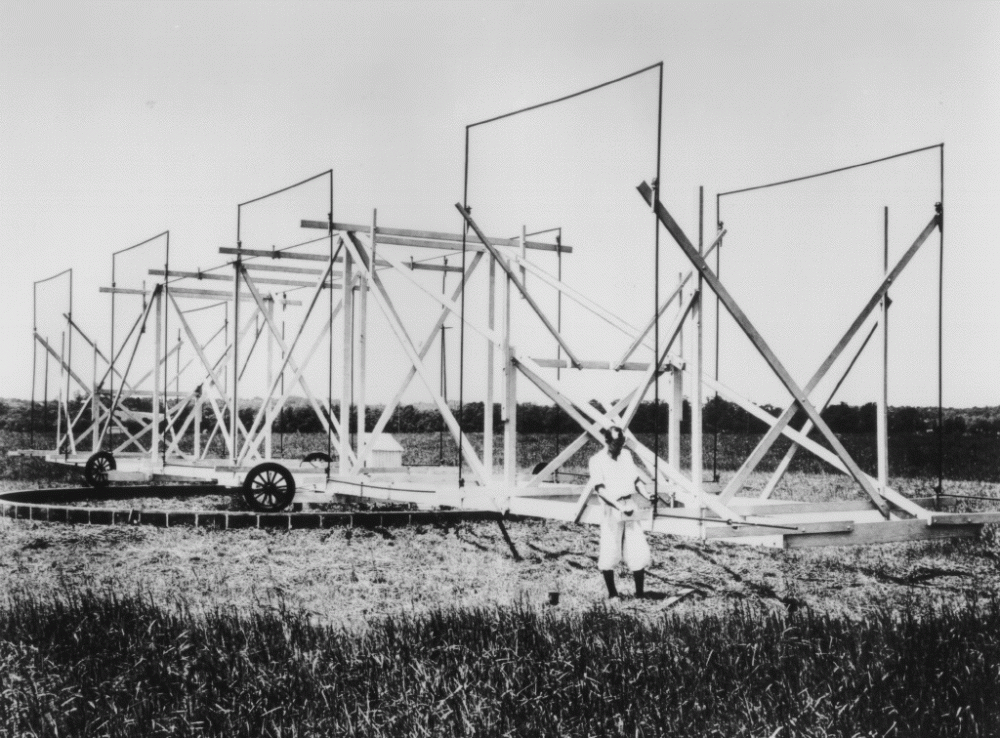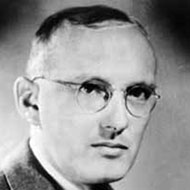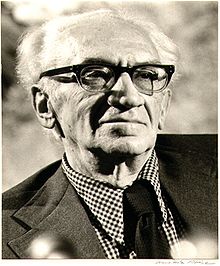Science Exposed
Who Invented Radio Astronomy? Jansky ?
Wiki tells us, and most assume it to be true: “Karl Guthe Jansky (October 22, 1905 – February 14, 1950) was an American physicist and radio engineer who in August 1931 first discovered radio waves emanating from the Milky Way. He is considered one of the founding figures of radio astronomy.” https://en.wikipedia.org/wiki/Karl_Guthe_Jansky
Karl Jansky is presented by science as a physicist and the first radio astronomer, but it was Grote Reber, an amateur radio enthusiast who was responsible for the invention and developement of the science. Jansky is someone that most people today take for granted and see radio astronomy as the domain of astrophysicists and cosmologists. But, Reber built the first steerable parabolic radio astronomy dish at home in his back yard, with no help or advice from any scientific source. A new branch of science was born without a scientist in sight.
Karl Jansky is described as a physicist in his Wiki bio’, but at the time of his accidental discovery of radio noise from space, he was working as a radio engineer. He had a physics degree although he never worked as a physicists, but because he has been elevated to scientific stardom, he also has to be seen as a brother scientist. He was a teacher for most of his working life. His claim to fame, a discovery made while working as an engineer for Bell Telephone Laboratories in Holmdel, NJ. The Bell Company asked him to investigate the 10-20 meters band for sources of static interference that may have caused problems with short-wave radio-telephone communication transmissions. In 1932, he detected the first radio waves from a cosmic source, for the rest of his life he did nothing more for radio astronomy. He was not a radio astronomer and his antenna was not of the ideal kind used for radio astronomy and never intended to be so.

Three types of static were identified by Jansky: Nearby thunderstorms, distant thunderstorms, and a faint steady hiss of unknown origin. This was eventually traced to the direction of the centre of the Milky Way galaxy. Jansky spent over a year investigating, at which point Bell withdrew his funding. The cosmic static was not a problem for radio propagation and therefore not worth investigating, although he publicised his results in the Proceedings of the Institute of Radio Engineers in December of 1932. The only person who seems to have taken an interest was Grote Reber.
Reber wrote to Jansky and asked for a job working alongside him at Bell Labs, but was surprised and disappointed to learn that Bell Labs was not interested in pursuing Jansky’s discovery of extra terrestrial radio noise. Reber contacted a number of observatories and universities but none was interested in cosmic star static.168

Reber said “The astronomers were afraid of it because they didn’t know anything about radio. The radio people weren’t interested because it was so faint it didn’t even constitute interference. Nobody was going to do anything. “So, all right, if nobody was going to do anything, maybe I should do something”. “So I consulted with myself and decided to build a dish!”. 169
ieeeghn.org: “His backyard radio dish was 31ft (9.5m) in size, could be pointed accurately, and cost $1300. It was constructed by Reber in 4 months while temporarily unemployed. With this instrument he constructed the first celestial radio maps of the sky, plotting radio strength vs. position. (Robertson P. 1992: 14-16)”. 170

In spite of Jansky’s lack of interest he has been elevated in status, having the Jansky, a measure of flux density named after him. By contrast, Reber, the first to attempt systematic scientific radio astronomy has remained all but anonymous in academic circles; such is the selective memory of history concocted by science. There was no theory that predicted cosmic radio transmissions of this kind at that time and it’s hardly surprising that the astronomers would want a theory. They tended, then as now, to be more interested in mathematical theory than actual observations. (The writer has contacted several astronomers on this point and they all seem to agree that they are first mathematicians and second astronomers.) It was to be another ten years before the scientific community caught-up with the idea and took notice of Reber’s work. There seems to be much confusion on this point today and an assumption is made that Reber was backed by science from the onset. Not true. Reber became disillusioned with academic science, something that seems to have remained with him for the rest of his life. His refusal to join the academic ranks is the reason he became persona non grata in circles scientific and his name all but forgotten.
n1maa.co: “Because Reber had “…no academic connection and unclear credentials…” his paper drew little attention from the astronomy community. He soon became discouraged by the lack of support for his work and his vision to build a large radio telescope. Reber describes…”First, the astronomers had a nearly complete lack of knowledge of electronic apparatus, viewing it as black magic. Second, and more important, the astrophysicists could not dream up any rational way by which the radio waves could be generated, and since they didn’t know of a process, the whole affair was at best a mistake and at worst a hoax.” Grote described the scientific community as “self appointed pontiffs looking over my shoulder giving bad advice. Fundamentally, the kind of things I want to do are the kind establishment men will not have any part of.” 171 Nothing changes.
The “no theory” stratagem often crops up , usually used as a means of hand-waving away a new discovery. If the discovery persists, like the emissions from space, a theory is concocted and academic science is then able to claim the original idea like an adopted child. The history of the discovery is then revised to give the illusion that it was the theory that was the first and most important element. Alternatively, science will grant an honorary award to the discoverer and welcome them into the fold. Either way academic science wins and receives a standing ovation for doing so. Reber refused to play the game and was treated as a non-person…
At the time of the birth of radio astronomy it would have been all but impossible for an academic scientist to have conceived of the same idea under the prevailing theory and this serves as a classic example and a warning to anyone with a new idea; theory is a disincentive to further astronomical or any other discovery. Theory predicted that only hot cosmic bodies like stars would emit radio waves and emissions from the planet Jupiter discovered in the 1950’s after Ginzburg’s new theory, would have been considered absurd at an earlier date. Scientific theory is invariably an obstacle on the path of progress.
1940’s Theory
“Reber found that the radio power was weaker at higher frequencies, contrary to what was predicted by the (1940’s) theory of thermal radiation. This theory applies to the light from stars or any hot object such as molten iron or stove burners, and predicts that the radio emission increases at higher frequencies. But Reber found just the opposite relation for the Milky Way. Some other, “non-thermal”, process had to be at work. It was not until the 1950s that a Russian physicist, V.L.Ginzburg, worked out the theory of synchrotron radiation, which explains the observed radio spectrum.” 172
Reber was not a big bang theory believer; he believed that red shift was due to repeated absorption and re-emission or interaction of light and other electromagnetic radiations by low density matter, over intergalactic distances, and he published an article called “Endless Boundless Stable Universe”, which outlined his theory. Similar theories were presented by Fred Hoyle and Halton Arp, also rejected in favour of the Big Bang that has become a permanent and immovable feature. 173 And so, we see that radio astronomy, presented as if it were academic science is no such thing and was usurped and manipulated to fit the prevailing paradigms of academia.
The story of radio astronomy continues, using Reber’s ideas:
answers.com: “It was reading (Grote) Reber’s results that stimulated Jan Oort to pose the problem that led to Hendrik van de Hulst’s discovery of the 21-centimeter hydrogen emission.” 174

en.wiki: “Hendrik Christoffel “Henk” van de Hulst ( November 1918 – July 31, 2000) was a Dutch astronomer and mathematician. In 1944, while a student in Utrecht, he predicted the existence of the 21 cm hyperfine line of neutral interstellar hydrogen. After this line was discovered, he participated, with Jan Oort and Alex Muller, in the effort to use radio astronomy to map out the neutral hydrogen in our galaxy, which first revealed its spiral structure. 175 However, a map had already been made by Reber.
Reber was there first: Wiki:”… but Reber refused a research appointment from Yerkes. He turned his attention to making a radiofrequency sky map, which he completed in 1941 and extended in 1943. He published a considerable body of work during this era, and was the initiator of the “explosion” of radio astronomy in the immediate post-Second World War era.” 176
strw.leidenuniv.nl:”At that time (1944) scientific news from the United States had not reached Europe for several years. But news had arrived earlier which was to fundamentally change astronomy. An American engineer, and radio amateur, Grote Reber, had proceeded from the discovery made several years earlier by Karl Jansky, in Jansky’s investigation of the source of interference which disturbed long-distance communication systems. Reber had himself constructed a steerable antenna and with this instrument had made a map of cosmic radio emission. The emission was particularly strong in the general direction of the center of the Milky Way. Reber’s map, together with the news of an interpretation by two American astronomers that the emission could not be explained in terms of known mechanisms, reached Oort in Leiden. Oort immediately saw the challenge of a new subject of astronomical research, and he also realized that radiation at radio wavelengths would penetrate the cloudy Dutch sky.
At a meeting of the Nederlandse Astronomen Club held at the Leiden Observatory on April 15, 1944, the possibilities and prospects of radio astronomy were discussed for the first time. Oort had asked Henk van de Hulst to consider the possibility of observing a spectral line in the radio regime. At the meeting, Henk gave a talk in which he suggested that neutral atomic hydrogen, which in its hyperfine transition radiates and absorbs at a wavelength of 21 cm, might be expected to occur at such high column densities as to provide a spectral line sufficiently strong as to be measurable. Shortly after the end of the war several groups set about to test this prediction. The 21-cm line of atomic hydrogen was detected in 1951, first at Harvard University followed within a few weeks by Dutch observations made in Kootwijk and by Australian ones made near Sydney.” 177
answers.com: “Edward Mills Purcell ..is credited with the discovery of nuclear magnetic resonance in 1945 (this is disputed). His scientific achievements included being the first scientist to detect radio emissions originating in the hydrogen of galaxies and his investigations into solid-state physics are still considered pioneering.” 178
en.wiki: “Purcell also made contributions to astronomy as the first to detect radio emissions from neutral galactic hydrogen (the famous 21 cm line due to hyperfine splitting), affording the first views of the spiral arms of the Milky Way.” 179
The first, but by no means the last example of a scientist, Purcell, being elevated far beyond the level of his actual achievements for what can only be described as political reasons. Three groups were looking for the already predicted 21 centimetre line of hydrogen and all three found it within weeks of each other. Purcell was just one of a team who were the first, after two years of research. 181
Radio emissions from Jupiter, no theory.
nasa.gov: “Our identification of Jupiter as a radio source is not based directly on reasoning, but more on luck,” Franklin, a scientist at the Carnegie Institution of Washington, later recounted.” 182 As science always works from a point of hindsight, it is seldom mentioned these days that the chance discovery of radio emissions from Jupiter in 1955, by Bernard Burke and Kenneth Franklin came as a complete surprise to astronomers. Or, if the astronomers were unaware of the lack of a theory, then it was a complete surprise to the physicists. The theory, used up-until that point did not allow for non-thermal emissions from sources such as planets and radio signals were only expected to emanate from hot bodies such as stars.
‘On the Recent Discoveries Concerning Jupiter and Venus’ is a letter published in Science magazine (December 21 , 1962, Vol. 138, pp. 1350-52) from Princeton University Prof. Valentine Bargmann and Columbia University astronomer Lloyd Motz concerning two of Velikovsky’s predictions, one on radio noises from Jupiter, the other on the heat of Venus.
“In the light of recent discoveries of radio waves from Jupiter and of the high surface temperature of Venus, we think it proper and just to make the following statement.
On 14 October 1953, Immanuel Velikovsky, addressing the Forum of the Graduate College of Princeton University in a lecture entitled “Worlds in Collision in the Light of Recent Finds in Archaeology, Geology and Astronomy: Refuted or Verified?,” concluded the lecture as follows:
“The planet Jupiter is cold, yet its gases are in motion. It appears probable to me that it sends out radio noises as do the sun and the stars. I suggest that this be investigated.” http://www.velikovsky.info/On_the_Recent_Discoveries_Concerning_Jupiter_and_Venus
Immanuel Velikovsky had predicted radio emissions from Jupiter in his book ‘Worlds in Collision’first published April 3, 1950.
nrao.edu and en.wiki: ” Synchrotron radiation (radio noise) results from electrons moving at speeds close to the speed of light in magnetic fields.” 183
astronomyonline.org: “The gas giant planets (Jupiter is one) emit more heat than they receive so are more prone to emit radiation in the radio bands. The most common form of radio emission is by way of Synchrotron Radiation.” 184
History, Synchrotron Radiation
en.wiki: “Synchrotron radiation was named after its discovery in a General Electric synchrotron accelerator built in 1946 and announced in May 1947 by Frank Elder, Anatole Gurewitsch, Robert Langmuir, and Herb Pollock in a letter entitled “Radiation from Electrons in a Synchrotron… Another example of technology preceding theory. (It was ignored at the time)
…It was first detected in a jet emitted by M87 in 1956 by Geoffrey R. Burbidge, who saw it as confirmation of a prediction by Iosif S. Shklovskii in 1953, but it had been predicted several years earlier by Hannes Alfvn and Nicolai Herlofson in 1950.
T. K. Breus noted that questions of priority on the history of astrophysical synchrotron radiation is quite complicated, writing: “In particular, the Russian physicist V.L. Ginzburg broke his relationships with I.S. Shklovsky and did not speak with him for 18 years. In the West, Thomas Gold and Sir Fred Hoyle were in dispute with H. Alfven and N. Herlofson, while K.O. Kiepenheuer and G. Hutchinson were ignored by them.” 185
According to the above, synchrotron radiation had already been observed in lab-based electronic equipment in the 1940’s, (‘We knew about it all along’) but there was certainly no connection made to radio emissions from Jupiter or any other cosmic body.
Carl Sagan disagreed: en.wiki: “Regarding Jupiter’s radio emissions, Sagan noted that “all objects give off radio waves if they are at temperatures above absolute zero.” 186 (In an attempted debunking of Velikovsky)
By Jove

Since Worlds in Collision was published in 1950 and as the discovery of radio emissions from Jupiter was in 1955 and that it came as a complete surprise to science, it would have been impossible for Velikovsky to have derived his prediction from a scientific source. As we have seen above, no theory was available for science to predict the radiation from Jupiter’s belts until after 1956 at the very earliest. The general acceptance by science of a theory that was considered controversial at the time would have certainly taken much longer. This leads our reasoning to the conclusion that at the time of discovery and for several years afterwards it was a mystery to science as to why there were Jupiter emissions at all.
There is much regarding all of this that is suspicious and decidedly cock-eyed in nature. Sagan, with the customary scientific hindsight-slight-of-hand, treats the idea of radio emission from Jupiter as if it were a foregone conclusion, based on already existing science – something it certainly was not; call it the “presentism”, syndrome.
This habit of scientists who when reading the past history of science, do so in the light of present-day knowledge, persists to this day and even seems to be compulsory in order to obtain peer approval. Had this been common knowledge as Sagan seemed to suggest, the detection of Jovian radio waves would have been announced by Reber and several academic researchers who realised (after the discovery) that they had, in fact, recorded Jupiter themselves.
Retuning to the astronomers letter: “On the Recent Discoveries Concerning Jupiter and Venus” :
Velikovsky.info: “Soon after that date, the text of the lecture was deposited with each of us [it is printed as supplement to Velikovsky’s Earth in Upheaval (Doubleday, 1955)]. Eight months later, in June 1954, Velikovsky, in a letter, requested Albert Einstein to use his influence to have Jupiter surveyed for radio emission. The letter, with Einstein’s marginal notes commenting on this proposal, is before us. Ten more months passed, and on 5 April 1955 B. F. Burke and K. L. Franklin of the Carnegie Institution announced the chance detection of strong radio signals emanating from Jupiter. They recorded the signals for several weeks before they correctly identified the source. This discovery came as something of a surprise because radio astronomers had never expected a body as cold as Jupiter to emit radio waves.” 187
Worlds in Collision, a book written by Immanuel Velikovsky and first published April 3, 1950 predicted radio emissions from Jupiter. There can be no doubt that it was Velikovsky who was the first to make such a prediction.
We note with great interest that there are names that repeat with regard to discoveries anticipated by non scientists, one of the most notable being Imanuell Velikovsky. He also happens to be among the most abused by academics and I’m sure we will return to this theme.

Does radio astronomy has any significant in practical engineering? Because all there antennas are in earth, not in space.
There are many claims that Sun is not visible from outer space as it doesn’t emit anything in visible spectrum. If this is true, then all these definition in term of light years become meaningless as there is no light.
Also Newton’s law and Kepler laws were formulated without any radio astronomy. So why we need those complicated data analysis of spectrum in order to understand the universe?
LikeLike
See my page on radio astronomy: https://nextexx.com/who-invented-radio-astronomy/
Radio astronomy is used to map the radio wave universe as opposed to the universe we see by light waves.
Light is a field and not particles as we are told. A field can only be seen when it interacts with matter. The visor on a space suit and the window in a space craft are matter and so I would not be surprised if astronauts can see the Sun.
Newton and Kepler’s laws are very old. They knew nothing about electricity for example. But for some crazy reason science likes to hang on to them. Science is stuck in the iron age and thinks the Earth is at the centre of everything, isolated from the universe.
LikeLike
Please ignore the first sentence. I didn’t know you were on this page.
LikeLike